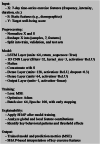Analysis of the mechanism of physical activity enhancing well-being among college students using artificial neural network
- PMID: 40670561
- PMCID: PMC12267614
- DOI: 10.1038/s41598-025-11269-3
Analysis of the mechanism of physical activity enhancing well-being among college students using artificial neural network
Abstract
This study explores the impact mechanism of college students' sports behavior on their well-being by constructing an Artificial Neural Network (ANN) model. The study employs an ANN architecture that combines a Long Short-Term Memory (LSTM) network and a Convolutional Neural Network (CNN). A prediction model is established based on the characteristics of sports behavior and psychological indices of well-being, such as psychological resilience, self-efficacy, and subjective well-being. The results show that the proposed LSTM + CNN model has achieved significant improvement on the test set. Its mean absolute error is only 0.072, the mean square error is 0.00596, and the root mean square error is 0.077, which is remarkably superior to traditional machine learning methods such as random forest and support vector regression. The innovative advantages of the proposed model in capturing the nonlinear relationships and deep characteristics of psychological and behavioral data is proved. The analysis of Shapley Additive Explanations (SHAP) values reveals three key factors significantly influencing well-being improvement. These impactful factors include the high-frequency exercise days per week (≥ 4), sustained morning exercise duration, and participation levels in group sports activities. The analysis of the dynamic threshold effect reveals that the critical points of distinct characteristic values exhibit substantial variations in their impact on well-being. Concurrently, the regulatory influence of sports behavior demonstrates differing intensities across diverse conditions. This study provides a new theoretical basis for designing personalized sports interventions and improves the accuracy of predicting psychological measurement data. Thus, it demonstrates the potential of sports behavior in promoting the mental health and well-being of college students.
Keywords: Artificial neural network; Psychological resilience; SHAP value analysis; Sports behavior; Well-being.
© 2025. The Author(s).
Conflict of interest statement
Declarations. Competing interests: The authors declare no competing interests. Ethics statement: The studies involving human participants were reviewed and approved by Department of Sports Studies, Faculty of Educational Studies, Universiti Putra Malaysia Ethics Committee (Approval Number: 2023.022384). The participants provided their written informed consent to participate in this study. All methods were performed in accordance with relevant guidelines and regulations.
Figures








Similar articles
-
The impact of psychological needs, social support, and sport motivation on college students' sport commitment and sports participation.BMC Psychol. 2025 Jul 23;13(1):821. doi: 10.1186/s40359-025-03173-2. BMC Psychol. 2025. PMID: 40702522 Free PMC article.
-
Impact of medical school on quality of life and mental health in Brazil: a cross-sectional comparative study.BMJ Open. 2025 Jun 4;15(6):e097917. doi: 10.1136/bmjopen-2024-097917. BMJ Open. 2025. PMID: 40467311 Free PMC article.
-
A New Measure of Quantified Social Health Is Associated With Levels of Discomfort, Capability, and Mental and General Health Among Patients Seeking Musculoskeletal Specialty Care.Clin Orthop Relat Res. 2025 Apr 1;483(4):647-663. doi: 10.1097/CORR.0000000000003394. Epub 2025 Feb 5. Clin Orthop Relat Res. 2025. PMID: 39915110
-
Management of urinary stones by experts in stone disease (ESD 2025).Arch Ital Urol Androl. 2025 Jun 30;97(2):14085. doi: 10.4081/aiua.2025.14085. Epub 2025 Jun 30. Arch Ital Urol Androl. 2025. PMID: 40583613 Review.
-
Psychological interventions for adults who have sexually offended or are at risk of offending.Cochrane Database Syst Rev. 2012 Dec 12;12(12):CD007507. doi: 10.1002/14651858.CD007507.pub2. Cochrane Database Syst Rev. 2012. PMID: 23235646 Free PMC article.
References
-
- Kaya, F. & Odacı, H. Subjective well-being: self-forgiveness, coping self-efficacy, mindfulness, and the role of resilience? Br. J. Guidance Couns.52 (4), 628–644 (2024).
MeSH terms
LinkOut - more resources
Full Text Sources
Medical

